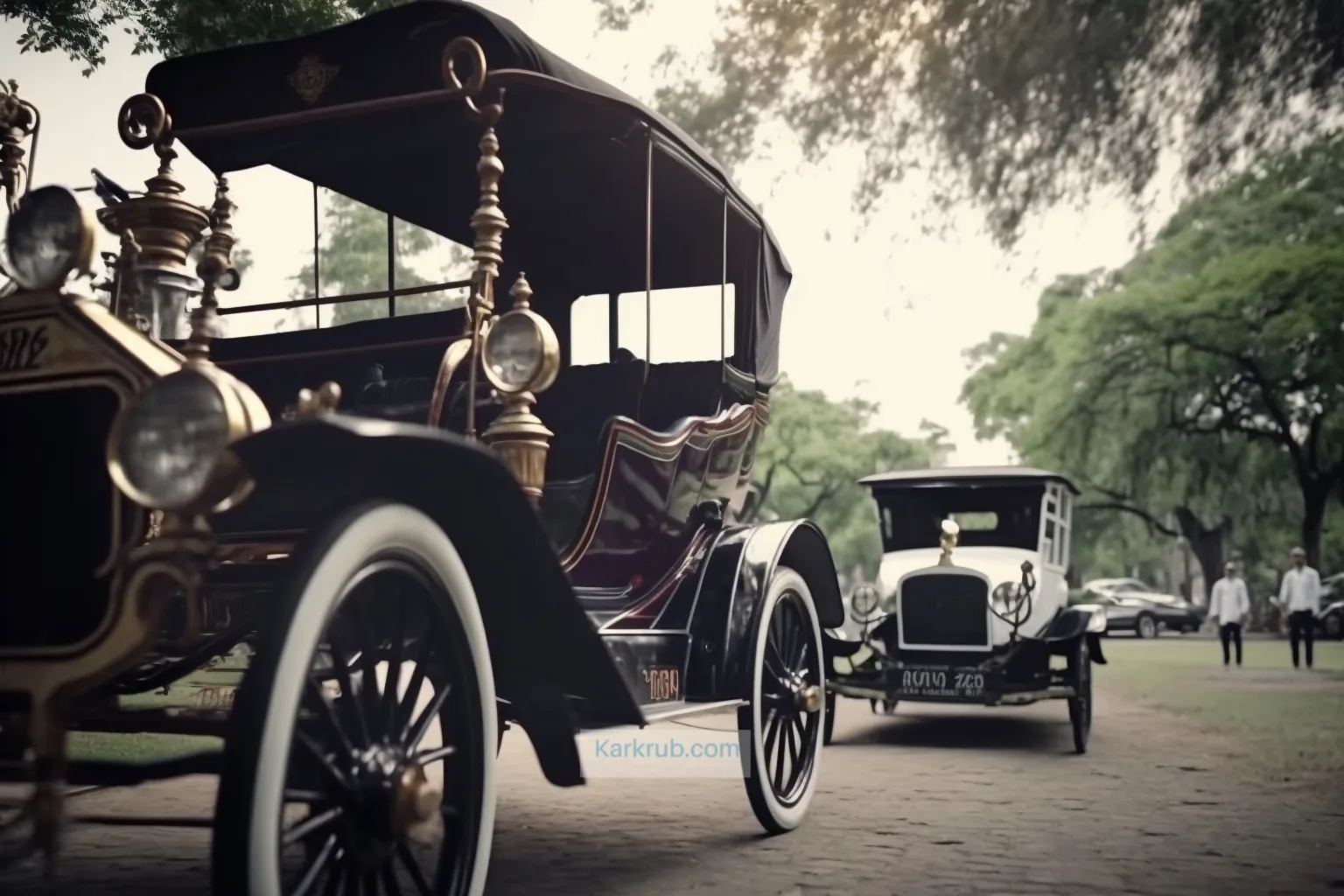Karkrub Story
The Evolution of the Automobile: From Horse-Drawn Carriages to Electric Vehicles
Step back in time with me for a moment. Imagine bustling streets, but instead of the roar of engines, you hear the rhythmic clip-clop of horses. Picture dapper gentlemen tipping their hats as they help ladies step down from elegant carriages. This was the world before the automobile – a time when horsepower meant, quite literally, the power of horses!
Then came the late 1800s. It wasn’t wizards or magic; it was innovators like Karl Benz and Henry Ford who decided that they were, quite frankly, tired of stepping in horse poop. They dreamt of machines that could transport people faster, without needing hay or a stable. And so, the automobile was born, sputtering to life, changing not just transport, but the world.
The Humble Beginnings: A Sputtering Start
The very first cars weren’t the sleek machines we’re familiar with today. No, they resembled horse carriages without the horse, and they didn’t have radios, air conditioning, or cup holders. Can you imagine? A life without cup holders!
The first vehicles ran on steam, which sounds like something out of a Jules Verne novel. But steam cars had their drawbacks. For starters, if you wanted to go for a spontaneous drive, you’d have to wait a good half hour for your vehicle to heat up. And, let’s not even talk about the safety hazards. Let’s just say eyebrows were occasionally singed.
Enter Gasoline: Fueling a Revolution
While steam was still hissing its way around, the internal combustion engine entered the scene. Fueled by gasoline, it promised more power and less ‘eyebrow mishaps.’ Cars like the Ford Model T revolutionized the industry. In fact, by the 1920s, the Model T had become so popular that, as Henry Ford famously said, “Any customer can have a car painted any color that he wants, so long as it is black.”
The Rise of the Electric Car: No Gas, No Problem!
Surprise! Electric cars aren’t a modern invention. In the early 1900s, electric vehicles (EVs) silently glided along city streets, offering a cleaner, quieter alternative to their gas-guzzling counterparts. In fact, at the beginning of the 20th century, EVs accounted for a third of all vehicles on the road! So why did they vanish? Blame it on a lack of powerful batteries, the allure of long-distance travel, and, frankly, our love affair with speed. Internal combustion engines won the race, and electric cars were relegated to history books.
The Revival of the Electric Spirit
Fast forward to the 21st century. With debates about climate change, there’s a renewed interest in electric vehicles. From humble hybrids to fully electric supercars, EVs have made a grand reentry. With companies like Tesla pushing boundaries, it’s not just about being green anymore; it’s about style, innovation, and ludicrous speed (literally, there’s a “Ludicrous Mode”).
From Four Wheels to No Wheels?
As we look to the future, what’s next for the evolution of the automobile? Flying cars, perhaps? It’s anyone’s guess, but what’s certain is that we’ve come a long way from the clip-clop of hooves.
In conclusion, the journey of the automobile is nothing short of extraordinary. From horse-drawn carriages to machines that promise a future in the skies, we’ve truly revved up innovation. And the best part? We’re all in the driver’s seat, navigating the future of transportation.
So, next time you step into your car, whether it’s an old-timer or a futuristic electric vehicle, take a moment to appreciate the rich tapestry of history that’s brought us here. And as you cruise down the highway, remember that once upon a time, a drive meant clip-clopping at the leisurely pace of a horse. The road ahead is exciting, and who knows? Maybe one day we’ll say, “Remember when cars had wheels?”

Leave a Reply